Color sensing is a critical part of many automation procedures including quality control, sorting, or identification. Color detection has various meanings depending on who needs to recognize variously colored plastic parts in an assembly, confirm correct sequences of wire colors attached to a connector, or sort various elements ranging from textiles to pharmaceutical capsules.
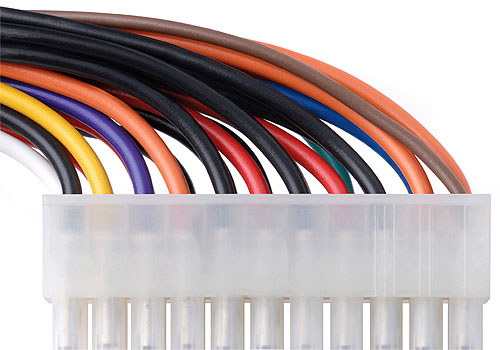
Advanced color sensors can detect plastic parts, colored glass, cloth, packaging, and objects that emit colored light.
Older generations of color sensors offered some function and flexibility that was adequate for earlier color detection applications. However, as application requirements have become more stringent, newer, high-end color vision systems are high-priced and involve custom software, extensive set-up, and auxiliary lighting.
To avoid that scenario, consider a new generation of color sensors that bridge the gap between basic color sensors and high-end, full-featured sensors. Options can include extended detection capabilities and multiple methods to evaluate colors. They can also eliminate the complexity and cost of additional lighting, custom set-up, and software.
Advanced color sensors learn and evaluate colors much like the human eye. They evaluate colors using an additive approach, looking at each color as a component of high, medium, and low frequency colors. This technique is a change from color sensors that use only one frequency band of light and do not account for the brightness of the color being inspected.
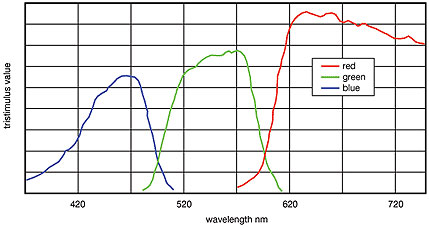
Lab Space classifies the “L” coordinate as the lightness/darkness of the color, “a” as the red-green color component, and “b” as the blue-yellow component.
Color basics
Colors can be uniquely identified by coordinates in what is known as “color space.” There are different types of color spaces and each defines its coordinates using different means. Most color spaces are three-dimensional. A good rule of thumb might be to evaluate colors in one color space for one application and to evaluate colors in a completely different color space with its own uniquely derived coordinates for another application.
A color space assigns a numeric identity to a color to uniquely define it, and can also identify the distance between multiple colors in a color space. This can be helpful to gauge how similar or different one color is compared to another.
Earlier versions of color sensors often use an XYZ color space to identify colors. XYZ color space was introduced by the International Commission on Illumination (CIE). The standard, specification, or technique identifies a color by three values (X,Y, Z) that are derived from the amount of red, green, and blue, respectively, in a color. Advanced color sensors let you select a color space that is best suited for an application. Specifically, Lab Space, also from CIE, classifies the “L” coordinate as the lightness/darkness of the color, “a” as the red-green color component, and “b” as the blue-yellow component.
One advantage of using advanced color sensors is the ability to choose the optimal color space for the application. For example, if it is necessary to differentiate colors of pharmaceutical pills and capsules inside clear blister packaging, it may be helpful to use Lab Space. The device allows the glossiness of the target (the clear plastic blister over the pill) to be considered independently so the color’s hue (the pill or capsule) is evaluated separately from its glossiness. Singling out an object’s brightness is also helpful because fluctuations in a target’s brightness can be ignored.
For a standard color sensor, it is often necessary to slightly angle the sensor’s lens when looking at very glossy targets. The glare from the reflected light can blind the sensor and render it unable to detect the color. Color sensors with selectable color spaces can be directed perpendicularly to the target — eliminating the need to angle the sensor lens. With this method, the sensor evaluates the brightness of the target separately. Many basic color sensors do not offer this level of flexibility since they operate in one color space.
Color space techniques let you use tolerance values to identify colors. Tolerances allow a space to be mapped out around a taught color to allow for normal variances that can occur when evaluating a color. Variances can occur in several situations, such as slight differences in how successive parts are made, how they are positioned for inspection, and imperfections in the parts themselves. Tolerances make it possible to adjust sensor sensitivity to a color. By decreasing the tolerance, the color sensor distinguishes very similar colors. By increasing the tolerance, the color sensor is less touchy to variations in the target color, and allows more “slop” or variance to be detected.
Tolerances can be visualized in several ways. Colors are identified as a point in the 3D space. A tolerance is identified as a 3D shape around each point, most commonly a sphere or cylinder. The smaller the sphere or cylinder, the smaller the tolerance. The color sensor is more discriminating when deciding if an observed color is the same as the taught color. When the sphere or cylinder is larger, the result is more “slop” and the sensor ignores color variation.
For example, when teaching a color sensor what an acceptable color is for a quality control check of a plastic molded part, it is helpful to identify a tolerance for that taught color so slight variations can be ignored. However, when evaluating two molded parts of similar hues of brown, it is helpful to decrease the tolerance around each color so that the two tolerances do not overlap.
High-level color sensors
One advantage of using higher-level color sensors is the number of different colors that can be taught. Basic color sensors can be taught generally one to five different colors. But many advanced color sensors can recognize 20 to several hundred colors. This capability allows the sensor to easily adapt if additional colors are added to the application.
Advanced color sensors can detect plastic parts, colored glass, cloth, packaging, and identify objects that emit colored light. The range includes objects such as LEDs on car dashboards, pilot lights, and stack lights. Color sensors confirm that the self-illuminated object being evaluated is emitting light and that the emitted light is the desired color — performing two tasks in one.
Flexible advanced color sensors can forgo using tolerances in favor of an evaluation method called classification. Classifying colors means that any color that is evaluated will be associated with the closest color already taught in color space. For instance, in a sorting application, ten brown totes will pass on a conveyer belt. The desired outcome is that the color sensor detects the color of each passing tote. Perhaps some totes are older, so their colors will be slightly faded from a newer tote. After the tote colors are taught to the sensor, every subsequent tote seen is linked to the nearest of the ten taught colors. So, a slightly faded brown tote will still be viewed as a new brown tote.
More sophisticated color sensors also allow any colors to be grouped together to specific output combinations. For example, a company wants to separate sections of carpeting into three color groups: beige, gray, and black. But there are different types of each. Grouping can be a simpler and faster way to automate the sorting process. The multiple samples of gray carpet group are taught to the sensor and are linked to the same group “1.” Whenever one of the gray carpet samples is seen, then output #1 turns on. Multiple beige colors are all taught and linked to group “2.” Likewise, whenever a beige carpet sample is present, output #2 is activated.
Advanced color sensors also verify that a correct sequence of colors is seen. This capability can be critical when inspecting color-coded wires for connectors and assemblies. The sensor is taught colors in a particular sequence and you program it to operate in sequential mode. Only when the colors are seen in the proper sequence again does the sensor’s output change state. Often, an external trigger, such as from another sensor or an internal timer, can be used to determine when the next color in the sequence should be seen. This method offers an easy quality check to verify that a part or connector is assembled correctly.
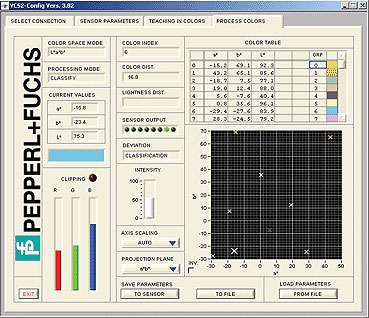
Advanced color sensors can recognize 20 to several hundred colors.
Additional applications
Fiber optic cables complement many color sensors to ensure color identification can be performed in harsh environments. Tight sensing confines, extreme temperature conditions, and small objects make fiber optics a better overall choice for many applications.
Fiber optic cables are available in diffuse or bifurcated models in which the transmitter and receiver elements are located on one single fiber optic cable tip. Or, they are available as thru-beam or opposed mode, in which two separate fiber optic cables are used, one as a transmitter and one as a receiver. Most color applications use diffuse mode fiber optic cables. The object being evaluated would provide an adequate reflective surface to send transmitted light back to the receiver elements in the fiber optic tip. But, if the material under evaluation is semi-transparent, such as some liquids, films, and wrappers, then a thru-beam mode fiber optic cable is the better choice. Because most of the light passes through a transparent object, the thru-beam fiber optic cable does not require light to be reflected from the object but actually requires some light to pass through the object. Fiber optic cables are typically available with a range of different tips to fit the mounting requirements of many applications.
Color sensors often use complex algorithms and routines to compare an object’s color against many already-taught colors looking for a match. A color sensor with a rapid response time can ensure improved throughput. Software that is “plug and play” eliminates the task of creating and customizing software. Color sensor software should be user-friendly and intuitive. Graphical displays let you quickly ascertain the similarity of colors to each other and if the defined tolerance is suitable. Color sensors have evolved to offer more control and more flexibility without the drawbacks of a full-fledged vision system. The benefits offer a bridge between the shortcomings of simpler color sensing technology and the pitfalls and expense of color vision systems.
Pepperl + Fuchs
www.pepperl-fuchs.com
::Design World::
Filed Under: SENSORS, TEST & MEASUREMENT

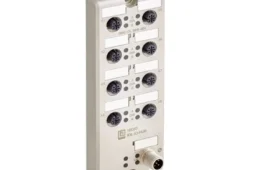

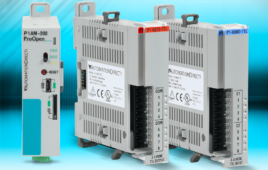
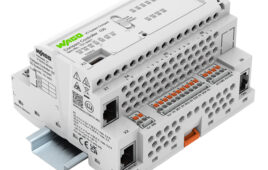
Tell Us What You Think!